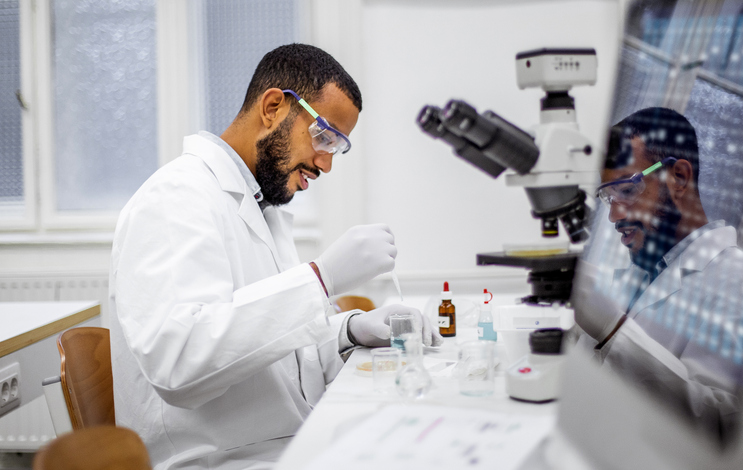What Does an Oncology Pharmacy Technician Do?
by Leslie Moore, CPhT

When I was asked what an oncology pharmacy technician does, my first thought was, what doesn’t an oncology pharmacy technician do? I work at a busy infusion center with four technicians and three pharmacists. We have two separate iv rooms, one for hazardous drugs and one for non-hazardous drugs, sharing one anteroom. We don’t label the drugs as “chemo” or “nonchemo.” Everything is hazardous, high-risk, or just regular. All hazardous drugs are stored and made in the hazardous drug iv room. (HD room). The high-risk and regular drugs in the other iv room include monoclonal antibodies, antibiotics, various irons, and autoimmune drugs. Some of the technician duties include ordering, opening, and arranging supplies, filling the omnicell, delivering inpatient chemo to the hospital, and making intravenous solutions. Technicians also follow all proper donning and doffing of PPE and complete all daily, weekly, and monthly cleaning tasks.
I need to explain how the drugs are classified to provide an understanding of why we call some drugs hazardous and some high-risk. The National Institute for Occupational Safety & Health (NIOSH) was established in 1970 as a research agency focused on studying worker safety and health. NIOSH uses six criteria to identify hazardous drugs (HD). This list can change yearly; usually, there are a few changes. Drugs have been downgraded to a high-risk category, and some are upgraded back to the hazardous category. Our job is to ensure the proper storage and handling of all hazardous, high-risk, and regular drugs. We find ourselves rearranging the refrigerators and relabeling bins when the list changes.
So how do we make these hazardous drugs? They are all made in the HD iv room in two chemo hoods per USP 800. We staff our HD room with two technicians and one pharmacist. A closed system transfer device (CSTD) is used for our protection during compounding and for the nurses during drug administration. A CSTD is a needleless drug transfer device that prohibits the escape of the drug. A device is attached to the top of the vial and another to the end of the syringe, and they are luer-locked together to extract the drug from the vial. The drug is injected into the bag through a special adapter. All hazardous and high-risk drugs are primed with either normal saline or D5 to provide safety measures for the technicians, the nurses during administration, and the patients. The high-risk drugs are not made with the CSTDs, but the risk has been deemed high enough to warrant attaching the tubing and priming the iv bags in the hood before we send the bags out to the nurses.
Before we can begin making the iv preparations, there are a few steps to go through. After gathering the drug, the iv bag, and the supplies, we scan the label, the iv bag, and each vial into the computer. This critical process, called dispense prepping, goes straight into the patient profile. Scanning these into the system provides the first safety check in the preparation process and will be checked by the pharmacist. Also, before preparing, the technician will calculate the amount of drug needed to be injected into the iv bag, providing another checkpoint in the process. You must have good math skills to prepare hazardous drugs.
The technician must know which tubing is required for each drug. Some require filter tubing, and some do not. It’s best to keep a compounding chart for reference. The technician must know what diluent to use and if the drug goes into a normal saline or D5 bag. Then all supplies are placed into the hood, and the preparation begins. An efficient process is best for opening all the syringes and CSTD supplies packages. Before injecting the drug into the bag, the pharmacist must check the syringe and sign off on the patient’s label. This is the last check in the process. The hazardous drugs are never injected into the bag without the pharmacist seeing them first. Each finished hazardous iv is double bagged, and the outer bag is wiped down with a bleach wipe before placing it into the pass-through window. The supplies are continually stocked throughout the day and the iv room is cleaned each day after the last drug has been made. It is always a very busy day at the infusion center, and it runs best with experienced, efficient technicians.






